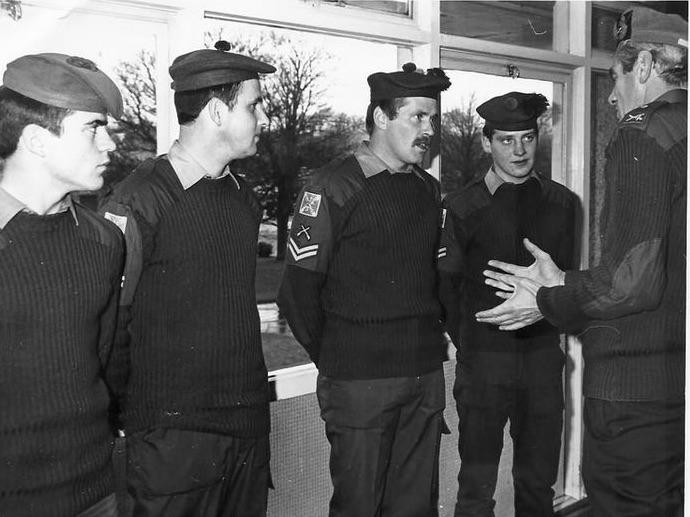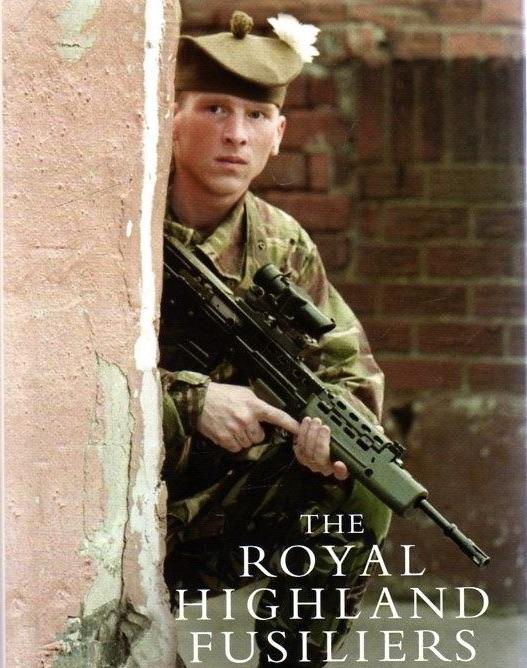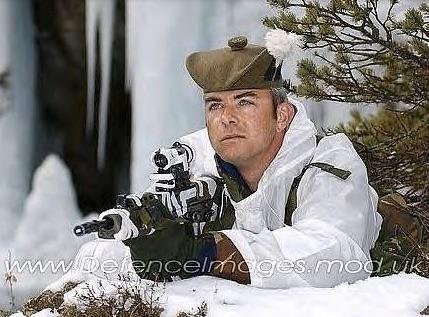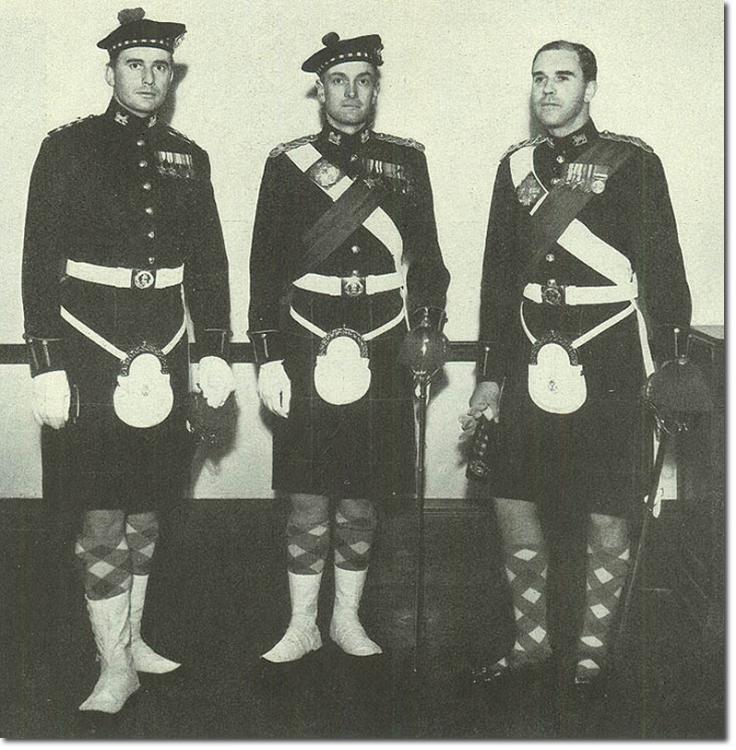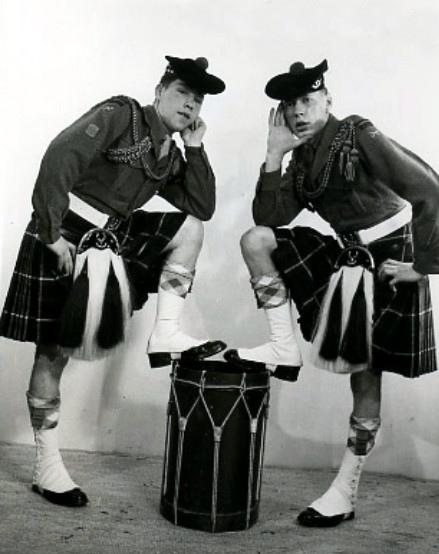
jf42
Past Contributor-
Posts
207 -
Joined
-
Last visited
-
Days Won
1
Content Type
Profiles
Forums
Blogs
Gallery
Events
Store
Everything posted by jf42
-
What is your theory based on, regarding your man's transfer from another regiment? In my experience, muster rolls usually enter the regiment from which a soldier has transferred or been drafted if he was already a serving soldier. The army like to keep track of soldiers. Although in 1783 the regiments were being reduced to a peacetime establishment, most in America had been reduced to a fraction of their official strength and would have needed recruits to make up numbers. Back in Britain and Ireland recruiting parties were busy in the spring and summer of 1783, (whether or not they were active in the newly assigned recruiting areas.) The 57th Light Coy had been captured at Yorktown, and may still have been interned. Do the Muster Rolls indicate he was actually in America when he enlisted in the 57th, or is it possible he enlisted back in Britain on the date recorded and was sent out to Nova Scotia to join the Regiment?
-
WWII Scottish Slouch Hats
jf42 replied to BlackWatch's topic in Great Britain: Militaria: Badges, Uniforms & Equipment
Black Watch - you should be able to find numerous images of the 2nd Bn Black Watch wearing bush hats/slouch hats in the field when involved in the Chindit expeditions into Burma. -
These can only be subjective impressions via a photograph but I don't share the view that this cap lacks the appearance of any great age, nor that it looks as if it's been brought back in a time machine. The hair is matted and discoloured in a way that, to me, suggests the passage of centuries. I can't comment on the front plate but Flashheart's observations seem to me thorough and persuasive pending closer examination. Peter's comment about extended daily wear by a re -enactor or similar is an interesting one, but I have two observations to make. The first is that the great majority of re-enactors' bearskin caps don't get the look right, especially the 'skinny' profile of the upward grain of the fur. Instead, the nap is too bushy and they tend to resemble bad copies of French Imperial Guards caps. Or bad copies period (Obviously Peter is talking about an exception to that tendency). Secondly, who would wear such an immaculate and clearly expensive copy as this one in the field? As was the practice at the time, the caps were found to be too fragile for field use and were soon returned in store for special occasions in camp or cantonment. True the grenadiers at Brandywine still had their caps with them, ready to put on before they advanced.. I did see on a forum dedicated to the AWI, a claim by a re-enactor that his cap was so light and pliable, that he would keep it stuffed in the side pocket of his uniform coat, ready to whip out and clap on his head. I expressed some scepticism but he was insistent. Drummers might have been more likely to keep their caps although their role as signallers in the field was eventually relegated to a more ceremonial one, sounding calls in camp. The 50th, reduced by service in the West Indies and sent home in 1776, passed the rest of the Americanwar reforming and on garrison duty in England and Ireland before being posted to Gibraltar in 1784. It passed the next fifteen years serving in various mediterranean stations culminating in the Egypt campaign of 1801 after which it returned home. At that time, the new model grenadier cap, its function entirely ceremonial, was being introduced. One other thought about survival: bearskin caps were regimental property and so this would be more likely to have been kept by an officer when the 1768 cap was superceded by the next model, ca. 1800, and then passed on in who-knows-what series of gifts or transactions but kept safe. The organic nature of the material means this kind of survival is rare but clearly it has been possible.
-
Prince of Wales Feathers Badge
jf42 replied to Monique's topic in Great Britain: Militaria: Badges, Uniforms & Equipment
Monique, greetings. I know you have decided not to use the artefact in your display but you may be interested to know that some infantry regiments did have non-regulation badges with regimental insignia attached to the flap of their cartridge pouches. The single cartridge pouch hanging from a shoulder belt on the right hip, was superceded in the mid-1860s by the Valise equipment (the first integrated system of load-bearing equipment with twin waist-pouches) , although some regiments in India were still wearing the old pouch in the 1880s. I wonder, given the trapezoid shape, whether this might more likely than a shoulder belt plate. It shouldn't be too difficult identifying regiments that used the PoW feathers insignia with those posted to NSW in the 1850s. As you probably know, the 77th East Middlesex Regt were briefly in NSW 1857-58. In 1810 the PoW feathers “used as regimental badge for sometime past ” were officially recognised. In 1854 the PoW feathers ornamented regimental buttons and also the crossbelt plate with the motto “Ich Dien.” Could there be a connection with the name of the colony? -
mknown british tunic.
jf42 replied to Monsieur Hulot's topic in Great Britain: Militaria: Badges, Uniforms & Equipment
The fabric is not corduroy (which I believe would be cotton), but a heavy wool twill, hence the pronounced diagonal 'grain' to the cloth. -
Graham- greetings. I just re-read the caption to this great image more carefully and noticed the reference to Glengarry badges. Given that the Glengarry was already obslolete for general use by the start of the 2nd Boer War and, indeed, in 1903 the Foreign Service cap that replaced was obsolescent, having been replaced in 1902 by the Brodrick cap for Home Service, I wonder where the Glengarry badges were dug up for attachment to the 3rd Battalion's hats, especially as the battalion was only formed in 1900. Intriguing.
-
Help needed in identifying uniform
jf42 replied to Michelle's topic in Great Britain: Research, Documentation & History
MIchelle, the badge on your man's cap could possibly be the grenade emblem worn by the Royal Fusiliers. The blue 'Field Service' cap was replaced by another design in 1902 for troops in Great Britain but continued in use until 1914 for troops in India, a place also indicated by the khaki drill uniform he is wearing. The Royal Fusiliers had two of their four battalions serving India between 1902 and 1916. The 2nd Battalion circa 1905-1915 and the 3rd Battalion briefly in 1911-12. He is indeed an elderly gentleman; too old to have been born in 1877, I would suggest. In 1914 he would have been only a sprightly 37. There are no badges of rank visible. This is a little late in the day but I hope you have asked for 'reply notification' and that this helps you at least a little way down the road. -
Uniform identify
jf42 replied to Anthony Gostling's topic in Great Britain: Militaria: Badges, Uniforms & Equipment
The men are wearing late-WW2 British battledress and General Service caps. The cap badge worn by the right hand man isn't immediately identifiable. The flags and bunting suggest this is a picture from VE Day or perhaps a liberation photo. Something about the subjects makes me wonder whether this might have been taken in Belgium or Holland, for example. -
Regiment ID Request
jf42 replied to LadyoftheLake's topic in Great Britain: Militaria: Badges, Uniforms & Equipment
LoL, as the others have said, a man born 1817 would be from an earlier generation than the soldier in this photograph. The image dates from 1881 or after, as indicated by the cut of his tunic, specifically the round 'jampot' cuffs, so-called. The style of the Glengarry bonnet suggests about 1890. Unfortunately, the detail of his cap badge and collar badges is not very clear, as these would identify his regiment. The 'facing' colour of his cuffs, colour, and perhaps shoulder straps, is distinctive, too. In regimental re-organisations of 1881, these were standardised to white for English and Welsh county regiments (despite the Glengarry forage cap, he is not a member of a Scottish regiment) but, gradually, in the years after 1881 regiments applied for their historic 'facing' colours to be restored. The dark cuffs here suggest either one of the numerous regiments with yellow facings, yellow showing as a dark tone in photographs of this period or, alternatively, a Royal regiment with blue facings. That brings me to the edge of my comfort zone. If you post your question at the 'Victorian Wars' forum, http://www.victorianwars.com/index.php, members there with extensive knowledge of late Victorian uniforms have marked up an impressive number of successes in identifying photos of this kind and should be able to comment in greater detail. -
Questions on DPM 68 and smocks
jf42 replied to Fariz's topic in Great Britain: Militaria: Badges, Uniforms & Equipment
These threads with contributions from Simon should help clarify the picture a little, even if obscured by my own contributions. -
Origin of the Tourie
jf42 replied to MMcQuown's topic in Great Britain: Militaria: Badges, Uniforms & Equipment
Indeed! Not that Topsy and I are well aquainted. There was little official about Highland military headgear until very late. Even after the great tightening-up of 1800-02, Regulations basicaly implied - "and the Highland regiments do their thing"; allowing soldiers to decorate their bonnets at their own expense according to their Colonels' discretion. Eventually Horse Guards regulated the height of feathered bonnets but the details of undress bonnets, even after the adoption of the glengarry across the board, were chosen according to regimental discretion; even between battalions of the post-1881 regiments. -
Origin of the Tourie
jf42 replied to MMcQuown's topic in Great Britain: Militaria: Badges, Uniforms & Equipment
The tourie originated in the structure of a knitted woollen bonnet, whereby the needles work in a spiral toward the centre of the crown, leaving a tuft of wool in the middle- as can be found today on some French-style berets. It became a Scottish custom, following shrinking and milling of the finished bonnet, to attach a small decorative pom-pom to the tuft- the word 'tourie' or 'toorie' applies to either. There is no clear evidence as to when touries in contrasting colours became standard. As early as 1742 we find illustration (*see below) of a red tourie on the bonnet of a Highland soldier of Semple's regiment (better known as the 'Black Watch') although in subsequent images, mostly officer portraits, a tourie is not apparent. This is true of Highland regiments in general. Increasingly, as the military bonnet was cocked higher and the mounting of the ostrich feather decoration grew more extravagant, touries would only have been visible on 'hummle' undress bonnets. These were essentially a regimental matter. In a rare glimpse, a red tourie is visible on the bonnet of a fallen Highand soldier in Copley's 'The Death of Colonel Peirson' painted in 1783, undoubtedly painted from an existing item (**see below). In addition, from the 1780s there may have been added refinements such as touries denoting flank companies- e.g. white for grenadiers and green for light infantry- but this would also have been a regimental matter and the subject is obscure. *The added caption on the image from the 1742 'Cloathing' book is incorrect; an error repeated in many reproductions. Semple's was numbered 43rd in the line until 1749, when it became 42nd. In 1751, when use of Colonels' names officially ceased, the number became part of the regimental title- '42nd (Highland) Regiment of Foot'. A C19th version of the same image is attached. -
Balmorals wih diced bands were worn in No. 1 dress by a number of Scottish regiments for a brief period after WWI but they were fuller in the crown and shaped as traditional bonnet. Moreover although I am not entirely certain about this, I don't believe in general those bonnets were worn with hanging ribbons. I think a Highland Regiment of Canada is more likely, and I would guess the 1940s period (unless it is from WW1). Post-war, the traditionally shaped bonnet came back into favour in Canada as well.
-
Royal Highland Fusiliers TOS?
jf42 replied to Chrisnp's topic in Great Britain: Militaria: Badges, Uniforms & Equipment
I believe wire was used to stiffen the 'brim' of the bonnet. The material used would need to have been water resistant. I am not sure when the current model of issue bonnet came into use but I am fairly certain it was some time after 1989. -
Royal Highland Fusiliers TOS?
jf42 replied to Chrisnp's topic in Great Britain: Militaria: Badges, Uniforms & Equipment
1st Seaforths wore a Mackenzie tartan flash in 'saltire' from before the 1st WW. Mike Chappell has painted a portrait of a 2nd Seaforth Highlander in 1918 with what appears to be a Mackenzie tartan flash on the cross with a central vertical white stripe but I have seen no confirmation of that. Just to add some more background on RHF, both RSF and HLI wore tartan flashes on the cross. The 1st Bn HLI wore a white hackle from circa 1945 until 1947 when 2nd Bn HLI disbanded and they took over their red and white hackle. -
Royal Highland Fusiliers TOS?
jf42 replied to Chrisnp's topic in Great Britain: Militaria: Badges, Uniforms & Equipment
It became a Royal Highland Fusilers fashion from about 1970 onwards, perhaps a little later, to cut down and stiffen the crown of the ToS in order to shape it with the front tipped down and the sides cocked up. I wouldn't swear to it but that bonnet looks likes to me like the current issue model ToS for Scottish troops. Before the great amalgamation of 2006, the Lowland Regiments, indeed most Scottish regiments other than the Black Watch, favoured the Glengarry in most orders of dress, even in Aden and in Northern Ireland for a while, reserving the ToS for working dress and field training. Generally, speaking hackles were not worn with the Glengarry apart from the Queen's Own Highlanders who, on the amalgamation of the QO Camerons with the Seaforths in 1961, having eschewed the blue bonnet, started to wear a discreet blue tuft on their Glengarry behind the cap badge. The QO Camerons had been granted a blue hackle in their ToS by George VI in 1939. A number of Scottish regiments, both Lowland and Highland, adopted a hackle with the bonnet post-1945, hitherto the preserve of the Black Watch: Cameronians, HLI, QO Camerons. With the ToS, customs varied. Some regiments wore their cap badge but in the case of the Royal Highland Fusilers when wearing the ToS, only the white hackle was worn with the tartan flash. Possibly the large grenade cap badge and the hackle did not sit well together on the bonnet. The white plume had been a traditional fusilier symbol dating from the late C18th but had only been worn in the Fusiliers Full Dress fur cap. The arrangement in the RHF ToS may have been part of the negotiations for the Highland Light Infantry to amalgamate with a Lowland Regiment (The Royal Scots Fusiliers) after having only regained full, kilted Highland status (including a white over red hackle ) just after the war. The symbolism is a little confused. All Highland regiments other than the Black Watch had worn a white hackle in their feather bonnets from 1829 and post-1902 the Seaforths had also worn a white hackle for Full Dress in their Wolsey sun helmets when in India (Possiblly the Royal Scots Fusiliers did too, I am not sure) However, those customs had been done away with after WW2, leaving the field clear for the Royal Highland Fusiliers to flourish theirs. In the group posted imediately below, taken at Glencorse Scottish Infantry Training Centre in1980, the training corporal on the left is RHF, next is unidentified (KOSB/RS) then two Black Watch. Interestingly, the RHF corporal appears not to be wearing a hackle in his bonnet. -
As a footnote, since it is too late to edit the above, I came upon a note I made some time ago from 'Badge backings and special embellishments of the British Army’ (Celer et Audax 1993) that refers to: Lancs Fusiliers. Yellow hackle worn over left ear, to denote an award for active service [Boer war?] I highlighted the passage to remind me to look further into that claim! Better late than never.
-
That hackle could hardly be father to the left, could it? As you say, the custom must surely reflect the wearing of the primrose 'plume' on the left of the Fusilier cap. As far as the paired Minden roses of the Lancs Fusiliers are concerned, the Minden tradition is not one I have looked into, so I can't add much. The red rose is said to symbolise the Lancashire connection while the yellow reflects the regimental facings of the old 20th. Given that until 1881 the official regional association of the 20th was with Devon not Lancashire, that explanation only goes so far, so what colour roses the 20th wore on Minden Day prior to 1881, I don't know. The Suffolks, 12th Regiment, also wore red and yellow roses on Minden Day so the custom may well predate the LF explanation. By contrast, the Hampshire Regiment (1st Bn, old 37th ) and I believe the KOSBs (old 25th) wore red roses. As you have said, the Kings Own Yorkshire Light Infantry (1st Bn, old 51st) wore a Yorkshire white rose. It was the Royal Welsh Fusiliers (fomer 23rd) who wore none. In each case these regiment's customs are perpetuated by their successor regiments.
-
My apologies, Leigh. I didn't grasp that you were referring to the LF's wearing of their post-WW2 hackle noticeably farther to the left than other Fusilier regiments. I have to say, though, I haven't found images of that practice in an online search. (It wouldn't make much difference nowadays!). lt seems clear that in LF tradition the primrose plume is associated with the action at Spion Kop although, as you rightly point out, it has to be more of a commemorative siginificance at Regimental level rather than being a battle honour, which would have been recorded as such and appear on the colours and drums. In the case of the Spion Kop debacle, that would not have been likely. Until 1900, the only Fusilier regiment to wear a hackle in the fur cap resurrected in 1866 were the Northumberland Fusiliers, with their red-over-white feather commemorating the defence of La Vigie on St Lucia in 1778, for which the 5th had received official Royal approval in 1824. Between 1900 and 1904 all the other eight existing fusilier regiments were granted 'plumes'; in the case of the LF in 1901. All were worn on the left side of the fur cap. I am not aware any of these fusilier cap distinctions were associated formally with conduct in the field. They are probably best seen in terms of the evolution of Fusilier dress. The forbears of the LF, the XX Regiment, had yellow facings and were one of the Regiments that sported the yellow and red Minden Roses on August 1st. These would seem to explain the LF's choice of colour for their cap 'plume.' The application for permission to wear a primrose yellow hackle in the busby (rather than the standard white of the reguation fusilier feather worn until 1844) was submitted to his Majesty for approval in November 1901. This request being grantec came to be associated with the LF's stoic defence of Spion Kop. The four Irish fusilier regiments being given plumes that each varied from the white of the 'old' fusilier regiments (Royal, Rpyal Scots, Royal Welsh) as well does, however, detract from the sense of the LF's coloured plume being a particular privilege. The Royal Dublin Fusiliers also considered their blue-over-white plume, ordered in 1902, to be "in recognition of their services during the war in South Africa." I am scouting around for similar associations made by other Fusiler regiments. I think your observation regarding "PR polish" and putting a brave face on a costly campaign is probably close to the mark. It is interesting that a number of British regimental distinctions claimed as unofficial 'honours' originated in possibly quite routine uniform changes which later came to be associated with gallant actions that ended in defeat or campaigns that ended in failure; the American war of Independence, the campaigns in the Low Countries 1793-99, the Boer War being good examples. Of course, this doesnt detract at all from the gallantry displayed in the actions which gave rise to the traditions.
-
I suspect few besides the First Guards received an immediate 'brevet'. Ewart had to wait nine months. Horse Guards, 9th March, 1816. Major General Sir Henry Torrens, presents his compliments to Sir John Sinclair, and has the honour to acquaint him, by direction of the Commander-in-Chief, that his Royal Highness the Prince Regent has been pleased, in the name, and on the behalf of his Majesty, to appoint Sergeant Ewart, of the 2nd Dragoons, to an ensigncy in the 3d Royal Veteran Battalion."—
-
Seriously? No, really...seriously?
jf42 commented on Brian Wolfe's blog entry in News From the Home Office.
A small country is always "the size of Wales"; which might presumably create problems when describing the small country the size of Wales known as 'Wales'

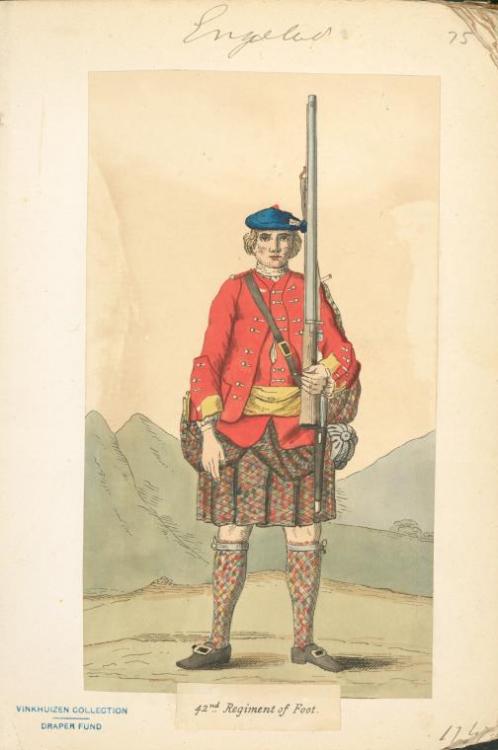
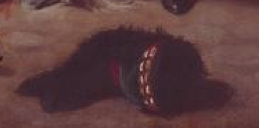
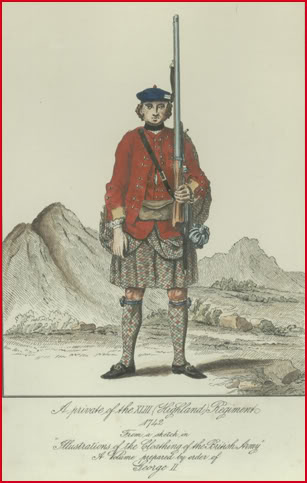
.thumb.jpg.fd193709a1dff6f7e0cf092dbe1dc5b0.jpg)
